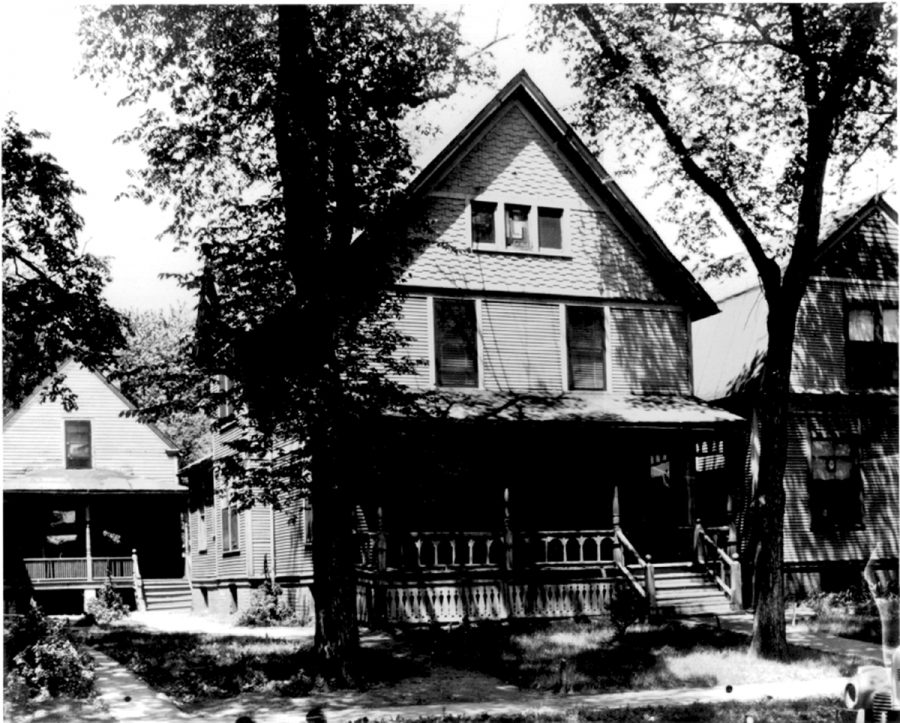Evanston Sanitarium’s original home at 1918 Asbury Ave. named new African American heritage site
Courtesy of Evanston Photographic Studio
1918 Asbury Ave. is the original home of the Evanston Sanitarium, the first black hospital in Evanston and a new African American heritage site.
July 13, 2020
At the turn of the 20th century, neither Evanston Hospital nor St. Francis Hospital served the local black community. Instead, black residents had to travel to Chicago for medical care or receive at-home treatment — until the creation of the Evanston Sanitarium in 1914.
Founded by married black physicians Dr. Isabella Garnett and Dr. Arthur Butler, the Evanston Sanitarium became the foundation for the Community Hospital of Evanston, which was dedicated to employing black physicians and serving the black community along the North Shore for decades.
The Evanston Sanitarium, 1918 Asbury Ave., is the home of Garnett and Butler and the site of the Sanitarium’s humble beginnings as a general practice and a nursing training school. It was one of eight recently recognized Evanston African American heritage sites.
The sites were designated in an effort to bring understanding and greater awareness to the contributions of the black community in Evanston.
“The black community was here, but it was, in essence, an invisible community because the choice was that you don’t have to pay attention to it,” said Dino Robinson Jr., the founder of the Shorefront Legacy Center and an author of the resolution.
Robinson pitched the idea alongside Ald. Robin Rue Simmons (5th), not only to honor black history but provide a necessary educational tool for the community.
“That’s the whole point of this — to have people learn something new,” Robinson said.
In addition to serving as the original black hospital in Evanston, the history surrounding Evanston Sanitarium is embedded with other notable firsts.
Sanitarium co-founder Garnett was one of the first black female physicians in the state, who led health care initiatives for the North Shore’s black community at the Evanston Sanitarium after Butler passed away in 1924.
When the Sanitarium merged with The Booker T. Washington Association of Evanston in 1930 to form Community Hospital, Garnett led alongside Dr. Elizabeth Webb Hill, the first black female hospital chief of staff in Illinois history.
During its tenure, Community Hospital was one of only four area hospitals that served black patients and employed black physicians.
Unlike other local hospitals, Community Hospital had a biracial board of directors. As stated in its 1929 bylaws, “no distinction… on account of race, religion or nationality, either as to officers, patients, attending physicians, interns, nurses or other employees of the corporation.”
However, Robinson noted the impetus behind this board was “predicated on Jim Crow.”
He mentioned that white members of the board drove resources into Community Hospital to draw black patients and doctors away from other, predominately white hospitals.
Community Hospital went through periods where it was underfunded, understaffed and overcrowded due to efforts to discredit the institution’s significance. The hospital eventually closed its doors in 1980.
Despite these barriers, the histories of Community Hospital and the Evanston Sanitarium are embedded with “many stories of vision, courage and heroism,” Pauline Williams, the president of the Community Hospital Board of Directors, wrote in an open letter.
“It not only has a glorious past, despite its origins, but it has a mission for the future,” Williams continued.
It is this past that the heritage sites hope to honor. The locations could be included in walking tours, exhibits and a website, according to a memo from the city’s Senior Planner and Preservation Coordinator Carlos Ruiz to Mayor Steve Hagerty and aldermen.
The eight African American heritage sites are only the beginning. Robinson said the process for choosing new sites is intended to be a community-led endeavor. He said he has also created a list of about 54 other potential heritage sites across Evanston.
“It’s not the city of Evanston designating or proving (the worth of the sites),” he said. “It’s the black community that controls the narrative.”
Interested community members can contact Robinson at [email protected] to get involved.
Email: [email protected]
Twitter: @oliviayarvis
Related Stories:
– Evanston Preservation Commission votes to make former Foster School building historic landmark
– Evanston Juneteenth celebration set to virtually honor black residents amid the pandemic


